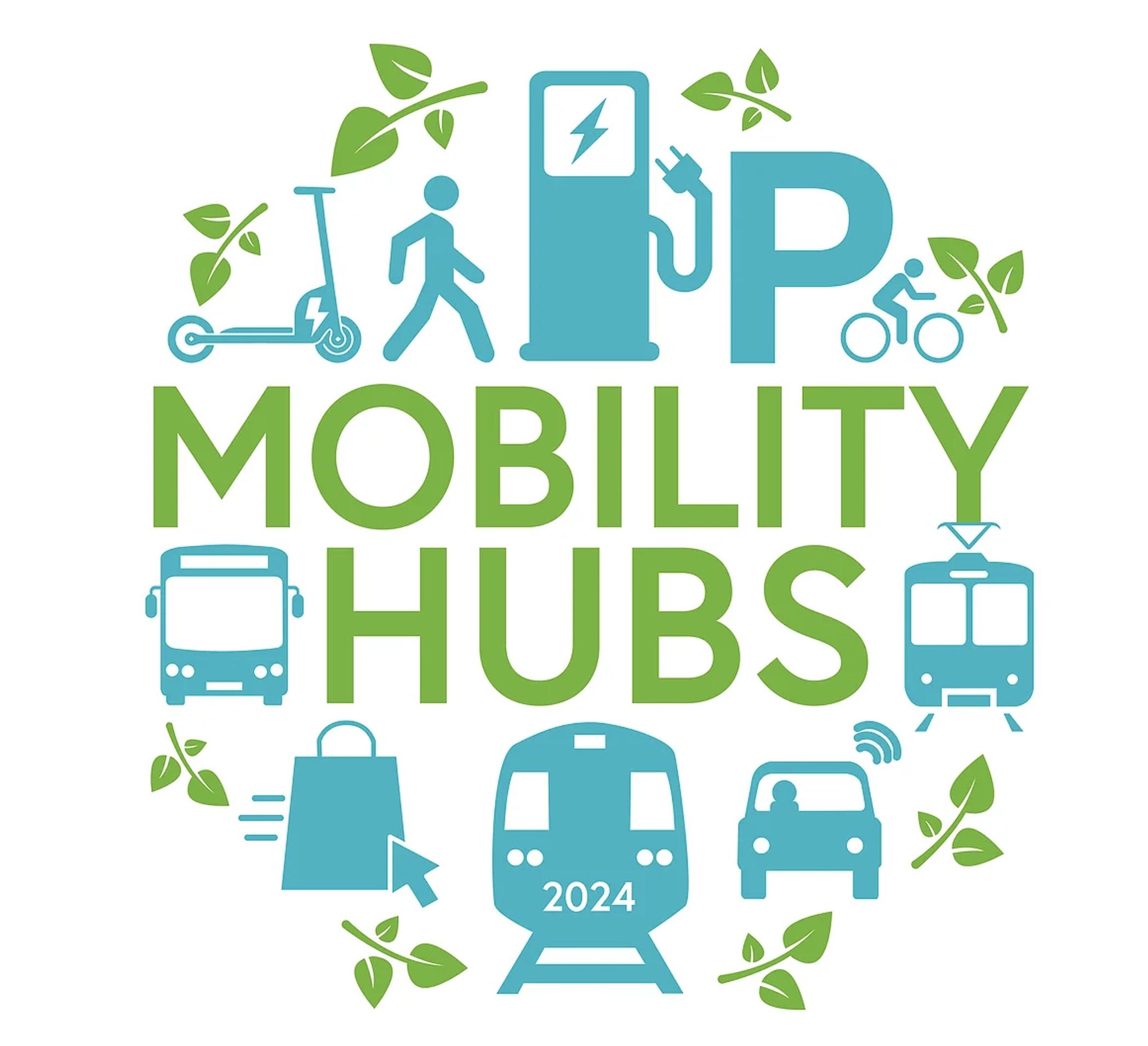

Mobility hubs are spaces where public, shared and active travel modes are co-located alongside improvements to the public realm. They enable travellers to make smooth and safe transfers between different modes, swapping private cars for shared vehicles, bikes, buses, trains, scooters or walking. The good news is that local authorities, passenger transport operators, property developers, parking companies, mobility services providers and logistics companies are all embracing the mobility hub concept.
Landor LINKS’s annual Mobility Hubs conference has created a space in which these different groups can connect and share ideas. The third edition, held in Birmingham on 11 July, saw speakers and expert panels discuss the design, implementation and operation of mobility, electric vehicle and service hubs.
The day began with Trevor Brennan, project lead at England’s Economic Heartland, looking at the role mobility hubs can play in transport policy. Robin Tyne, project manager at CoMoUK, then explored the range of services that can be provided at mobility hubs, including a new breed of ‘pop-up’ hubs.
Henry Norman, delivery manager at Sustrans, shared the ways in which community hubs can encourage people to become healthier and better connected by taking up walking and cycling.
Kate Gifford, head of future mobility at the West Yorkshire Combined Authority, provided insights into how mobility hubs can add an extra dimension to existing passenger transport networks.
Since the first edition of Mobility Hubs in 2022, projects have moved from being concept sketches into the real world. Delivering hubs draws together the skills of planners, engineers and architects as well as public transport and mobility service providers.
West of England Combined Authority (WECA) is developing a mobility hub network in the Bristol area. Amanda Edmondson, WECA’s mobility hubs project manager, and Lidia Derossi, principal engineer at AECOM, set out how the sites have been selected and the creative work going into designing the hubs.
Robert Davis, sustainable travel manager at Trueform provided an essential guide to fitting out mobility hubs with user-friendly and aesthetically-friendly cycle parking, wayfinding and shelters.
Dan Gullock, director of architect FATKIN, shared examples of how multi-storey car parks can be reimagined as mobility hubs that will help meet environmental and sustainability targets.
Mobility hubs will play a vital role in delivering sustainable developments, said Elizabeth Orchard, strategic land technical director at Endelevu working for Ptarmigan Land. She implored attendees to include mobility hubs at the outset of development schemes. She also flagged up how hubs generate valuable data.
Commercial parking operators are thinking about how city centre sites can be reimagined as mobility hubs. John Denton, Q-Park’s head of commercial UK&I, and Marcel Laeven, sustainable mobility programme manager from Q-Park International, talked about how their company is providing space for bike and scooter hire, shared car clubs and electric vehicle chargepoints, last mile deliveries, ‘click & collect’ lockers and cafés.
Mobility hubs bring a range of new travel choices and social interaction, but like the rest of the high street, these activities also need servicing. Laura Jacklin, commercial development manager of Grid Smarter Cities, looked at how to use digital permits to manage competing demands for access to town centre kerbside.
The day concluded with Anjna Patel MBE, chair British Parking Association, steering a discussion on how mobility hubs will evolve. Mobility hub pioneer John Austin, public transport manager at Southend-on-Sea City Council and Aoife Dudley, principal transport planner at City Science, joined the day’s speakers to imagine how to develop schemes that are both commercially and environmentally sustainable.
Landor LINKS is planning Mobility Hubs 2025. To find out more email Jason Conboy on jason@landor.co.uk
www.mobilityhubs.uk
TransportXtra is part of Landor LINKS
© 2025 TransportXtra | Landor LINKS Ltd | All Rights Reserved
Subscriptions, Magazines & Online Access Enquires
[Frequently Asked Questions]
Email: subs.ltt@landor.co.uk | Tel: +44 (0) 20 7091 7959
Shop & Accounts Enquires
Email: accounts@landor.co.uk | Tel: +44 (0) 20 7091 7855
Advertising Sales & Recruitment Enquires
Email: daniel@landor.co.uk | Tel: +44 (0) 20 7091 7861
Events & Conference Enquires
Email: conferences@landor.co.uk | Tel: +44 (0) 20 7091 7865
Press Releases & Editorial Enquires
Email: info@transportxtra.com | Tel: +44 (0) 20 7091 7875
Privacy Policy | Terms and Conditions | Advertise
Web design london by Brainiac Media 2020